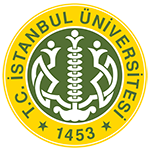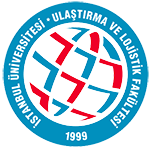
Ulaştırma ve Lojistik Kongreleri
- Türkçe
- Özet
- 2020
Gıda Tedarik Zinciri Yönetimi Kapsamında Ürün İzlenebilirliği
Kamil Bircan
Dr. Öğr. Üyesi, Adnan Menderes Üniversitesi, Aydın, Türkiye
Algın Okursoy
Dr. Öğr. Üyesi, Adnan Menderes Üniversitesi, Aydın, Türkiye
Günümüzde firmaların daha iyi müşteri değeri yaratarak rakipleri karşısında pazarda avantaj sağlamasında dış çevresiyle olan etkileşimi son derece önemli rol oynamaktadır. Rakipler karşısında fiyat ve kalite avantajı elde etmek, rakiplerinden önce müşteri değeri yaratacak yeni pazar fırsatları elde etmek, değişen müşteri istek ve ihtiyaçlarına hızla cevap verebilmek isteyen üretim işletmelerinin tedarikçileri, dağıtım kanalı aktörleri, nihai müşterileri (tüketici) ve lojistik hizmet sağlayıcılarıyla ilişkilerini esneklik esası kapsamında yeniden yapılandırmaları gerekmektedir. Böyle bir ilişkinin oluşmasında kilit unsur bilgi olup taraflar arasında bilgi paylaşımının sağlanması ve geliştirilmesi ön koşul olarak kabul edilmektedir. Tarımsal üretim, hasat, paketleme, saklama, işleme, dağıtım ve taşıma fonksiyonlarının meydana getirdiği gıda tedarik zinciri, en dinamik zincirlerden biridir. Gıda çabuk bozulan bir mal olduğundan, hasattan son tüketiciye ulaşana kadar dikkatle takip edilmelidir. Gıda tedarik zinciri yönetiminde tarladan işletmeye, işletmeden rafa, raftan sofraya, sofradan insan metabolizmasına giden süreçte gıda güvenliği kapsamında insan sağlığı açısından maruz kalınan riskler, gıdaların kısa raf ömrü ve değişken kalite ölçütleri değerlendirildiğinde tedarik zinciri etkinliğine olan ihtiyaç göze çarpmaktadır. Bu hedef doğrultusunda bilişim teknolojilerinin kullanımı gıda tedarik zincirlerini bütünleştirme, koordinasyon, işbirliği ve şeffaflaştırma açısından izlenebilir kılmakta, bir sistem olarak gıda güvenlik unsurlarının kurulmasını kolaylaştırmakta ve gıda kalite parametrelerinin sürdürülebilir olmasını sağlamaktadır. Gıda üreten firmalar, ürettikleri üründe ve sundukları hizmette insan sağlığı üzerinde risk oluşturmayacak güvenilirlikte ve izlenebilirlikte sunulmasından yasalar çerçevesinde yükümlüdürler. Zincirde zararların kontrolü, markayı koruma, pazar payını ve müşteri güvenini koruma için izlenebilirlik gerekli bir durumdur. İzlenebilirliğin nicel ve nitel faydaları şu şekilde sıralanabilir: • Pazar payı artışı • Geri dönüşlerde azalma • İşgücü maliyetinde azalma • Davalarda azalma • Stokta azalma • Kalite güvenilirlik ve sağlıkta iyileşme İzlenebilir bir tedarik zincirini oluşturmak için, süreçleri firma içi ve firma dışı tedarik zinciri başlıkları altında ele almak gerekmektedir. • Firma İçi (Internal) İzlenebilirlik (Üretim, Depolama, Sevkiyat) [ERP, MES] • Firma Dışı (External) İzlenebilirlik (Hedef Pazar Analizi) • Merkezi İzlenebilirlik Sistemi (Paydaşların rolleri, ülkemiz ilaç endüstrisi için bu tip bir izlenebilirlik sistemini uygulamaya başlamıştır. • Dağıtılmış İzlenebilirlik Sistemi (Otorite, izlenebilirliğin yapılması kuralını koymakta ve pazarı uyumlaştırmaktadır. Amerikan ilaç marketi) İzlenebilirlik sistemini gıda tedarik zincirinde uygulamak için çeşitli teknolojiler kullanılmaktadır. Bunların arasında çoğunlukla barkod, kare kod ve RFID etiketler göze çarpmaktadır. İzlenebilirlik gıda tedarik zinciri boyunca ürün bilgisi elde etmek için gerekli bir araçtır. Gıda işletmelerinin tedarik zinciri yönetimi süreçlerinde, ürün izlenebilirliği teknolojisi seçimi için dikkate aldıkları kriterler geniş bir yelpazede değerlendirilmekte beraber güç kaynağı, okuma mesafesi, yakınlık bilgisi, frekans çatışması, depolanan bilgi miktarı, maliyet ve alt yapı uygunluğu başlıkları altında toplanabilir. Karar verme süreci bu kriterler dışında karar vericiler, çevresel değişkenler, rakiplerin durumu ve gelecekteki belirsizlik gibi daha birçok faktörün etkisi altındadır. Bu karmaşık yapı içerisinde alternatiflerin birden fazla kritere göre değerlendirilmesi, birbirleriyle karşılaştırılması ve sıralanması amacıyla çok kriterli karar verme yöntemleri sıklıkla kullanılmaktadır. Uygulanan yöntemlerin başında Analitik Hiyerarşi Süreci (AHS) gelmektedir. AHS, nitel ve nicel kriterlerin hiyerarşik bir yapı içerisinde birlikte değerlendirilebildiği bir yöntemdir. Analize dahil edilen elemanlar (kriterler, alt kriterler ve alternatifler) ikili olarak karşılaştırılır. AHS’de kriterlere ilişkin gerçek değerlerin bilinmemesi durumunda ikili karşılaştırmalar, karar vericinin yargılarını yansıtmak amacıyla 1-9 temel ölçeği yardımıyla yapılabilir. AHS’de alternatiflerin sıralanmasının yanında, ait olduğu hiyerarşi basamağında hangi kriterin ağırlığının daha fazla olduğu sorusuna da cevap verilebilmektedir. Bu çalışmada, çabuk yemek sektöründe faaliyet gösteren önemli restoran zincirlerine gıda tedarik eden bir firma için belirlenen 5 kriter altında ürün izlenebilirliği konusunda teknoloji seçimi karar verme sürecine yönelik AHS yöntemi uygulanmıştır. Analiz sonucu 1. tercih RFID, 2. tercih Barkod, 3. tercih 2-D Barkod olarak bulunmuştur. AHS anketi karar verici üst ve orta düzey yöneticilere uygulandığından gelecekteki izlenebilirlik beklentisi çerçevesinde sonucun RFID etiketler yönünde çıktığı düşünülmektedir. Gıda endüstrisinde RFID ve diğer etiketlerin gelecekte daha yaygın ve izlenebilirlik açısından daha fazla veriye ilişkin işlem kabiliyeti içereceği tahmin edilmektedir. Bu çalışmanın devamında temel hedefimiz işletmenin karar destek sistemlerinin iyileştirilmesi yönünde önerilerde bulunmaktır.
Anahtar Kelimeler: Gıda Tedarik Zinciri Yönetimi, Ürün İzleme, AHS Yöntemi, Barkod, Karekod, RFID
Product Traceability within the Scope of Food Supply Chain Management
Today, the interaction of companies with their external environment plays an extremely important role in creating better customer value and gaining advantage in the market against their competitors. To gain price and quality advantage over competitors, to obtain new market opportunities that will create customer value before their competitors, to respond quickly to changing customer demands and needs, the production companies' relations with suppliers, distribution channel actors, end customers (consumers) and logistics service providers are they need to be restructured. Knowledge is the key element in the formation of such a relationship, and the provision and development of information sharing between the parties is considered a prerequisite. The food supply chain, formed by agricultural production, harvest, packaging, storage, processing, distribution and transportation functions, is one of the most dynamic chains. Since food is a perishable commodity, it should be carefully monitored from harvest until it reaches the end consumer. When the risks faced in terms of human health, short shelf life of foods and variable quality criteria are evaluated within the scope of food safety in the process from farm to business, from business to shelf, from shelf to table, from table to human metabolism in food supply chain management, the need for supply chain efficiency stands out. In line with this goal, the use of information technologies makes food supply chains traceable in terms of integration, coordination, cooperation and transparency, facilitates the establishment of food safety elements as a system and ensures that food quality parameters are sustainable. Food producing companies are obliged within the framework of the laws to provide a reliable and traceability that does not pose a risk to human health in the product they produce and the service they offer. Traceability is a necessary condition for the control of damages in the chain, to protect the brand, to protect the market share and customer trust. The quantitative and qualitative benefits of traceability can be listed as follows: • Market share increase • Decrease in returns • Reduction in labor cost • Decrease in cases • Reduction in stock • Quality reliability and improvement in health In order to create a traceable supply chain, it is necessary to handle the processes under the titles of internal and external supply chain. • Internal Traceability (Production, Storage, Shipping) [ERP, MES] • External Traceability (Target Market Analysis) • Central Traceability System (The roles of stakeholders have started to implement such a traceability system for the pharmaceutical industry of our country. • Distributed Traceability System (The authority sets the rule of traceability and harmonizes the market. American pharmaceutical market) Various technologies are used to implement the traceability system in the food supply chain. Among these, mostly barcode, QR and RFID tags stand out. Traceability is an essential tool for obtaining product information throughout the food supply chain. In the supply chain management processes of food businesses, the criteria that they consider for the selection of product traceability technology are evaluated in a wide range, and can be collected under the headings of power source, reading distance, proximity information, frequency conflict, amount of stored information, cost and infrastructure compliance. The decision making process is under the influence of many factors other than these criteria, such as decision makers, environmental variables, competitors' situation and future uncertainty. In this complex structure, multi-criteria decision-making methods are frequently used in order to evaluate, compare and rank alternatives according to more than one criteria. The Analytical Hierarchy Process (AHS) is one of the methods applied. AHP is a method in which qualitative and quantitative criteria can be evaluated together in a hierarchical structure. The elements (criteria, sub-criteria and alternatives) included in the analysis are compared in pairs. In case the real values of the criteria in the AHP are not known, binary comparisons can be made with the help of 1-9 basic scale to reflect the judgments of the decision maker. In addition to listing the alternatives in the AHP, the question of which criterion has a higher weight in the hierarchy step to which it belongs can also be answered. In this study, the AHP method was applied for the technology selection decision-making process for product traceability under 5 criteria determined for a company that supplies food to important restaurant chains operating in the fast food sector. As a result of the analysis, the 1st preference is RFID, 2nd preference is Barcode, 3rd preference is 2-D Barcode. Since the AHP survey is applied to decision-making senior and mid-level managers, it is thought that the result is in the direction of RFID tags within the scope of future traceability expectation. It is anticipated that RFID and other tags in the food industry will be more common in the future and will include the ability to process more data for traceability. In the continuation of this study, our main goal is to make suggestions to improve the decision support systems of the enterprise.
Keywords: Food Supply Chain Management, Product Tracking, AHP Method, Barcode, QRCode, RFID


Bu çalışma, kullanan kişilere orjinal çalışmadan alıntı yaptıkları sürece, çalışmayı dağıtma, değiştirme ve üzerine çalışma hakkı tanıyan Attribution 4.0 International (CC BY 4.0) lisansı ile lisanslanmıştır.
İletişim
İstanbul Üniversitesi Ulaştırma ve Lojistik Fakültesi
İ.Ü. Avcılar Kampüsü 34320 Avcılar/İstanbul
ulk@istanbul.edu.tr
+ 90 (212) 440 00 00 - 19200


